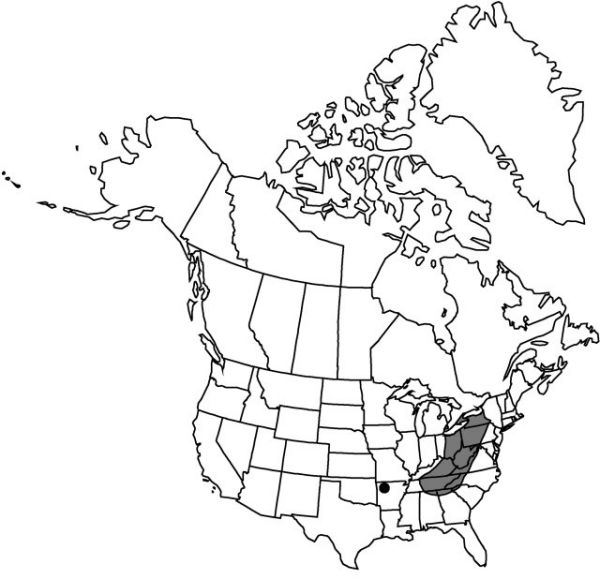Prosartes lanuginosa
Proc. Linn. Soc. London 1: 48. 1839.
Plants 4–7.5(–10) dm, finely pubescent. Stems sparingly branched. Leaves 5–15 × 2–5 cm; blade ovate to oblanceolate, rounded basally, adaxial surface glabrate or veins moderately pubescent, abaxial surface lanulose, densely so on veins, margins short-pubescent, hairs uniform, pointed sharply forward, apex narrowly acuminate. Flowers 1–3; perianth turbinate, narrowed basally; tepals spreading, greenish white to greenish yellow, linear-lanceolate to linear-elliptic, 15–22 mm, apex long-acuminate; stamens included, 8–15 mm; filaments narrowly dilated basally, 6–12 mm; anthers 2–4 mm, glabrous; ovary narrowly ellipsoid, glabrous, ovules 2 per locule, pendulous; style stout, 8–12 mm, glabrous; stigma weakly 3-lobed. Berries bright red, 1–2(–4)-seeded, globose, 10–15 mm, glabrous. Seeds 5–6 mm. 2n = 18.
Phenology: Flowering late spring–early summer.
Habitat: Rich moist, deciduous woods, coves
Elevation: 200–1600 m
Distribution

Ont., Ala., Ark., Ga., Ky., Md., N.Y., N.C., Ohio, Pa., S.C., Tenn., Va., W.Va.
Discussion
Recent collections have extended the known range of Prosartes lanuginosa from the unglaciated Appalachians to the other ancient, eastern North American upland, the Ozark Mountains of Arkansas.
Selected References
None.
